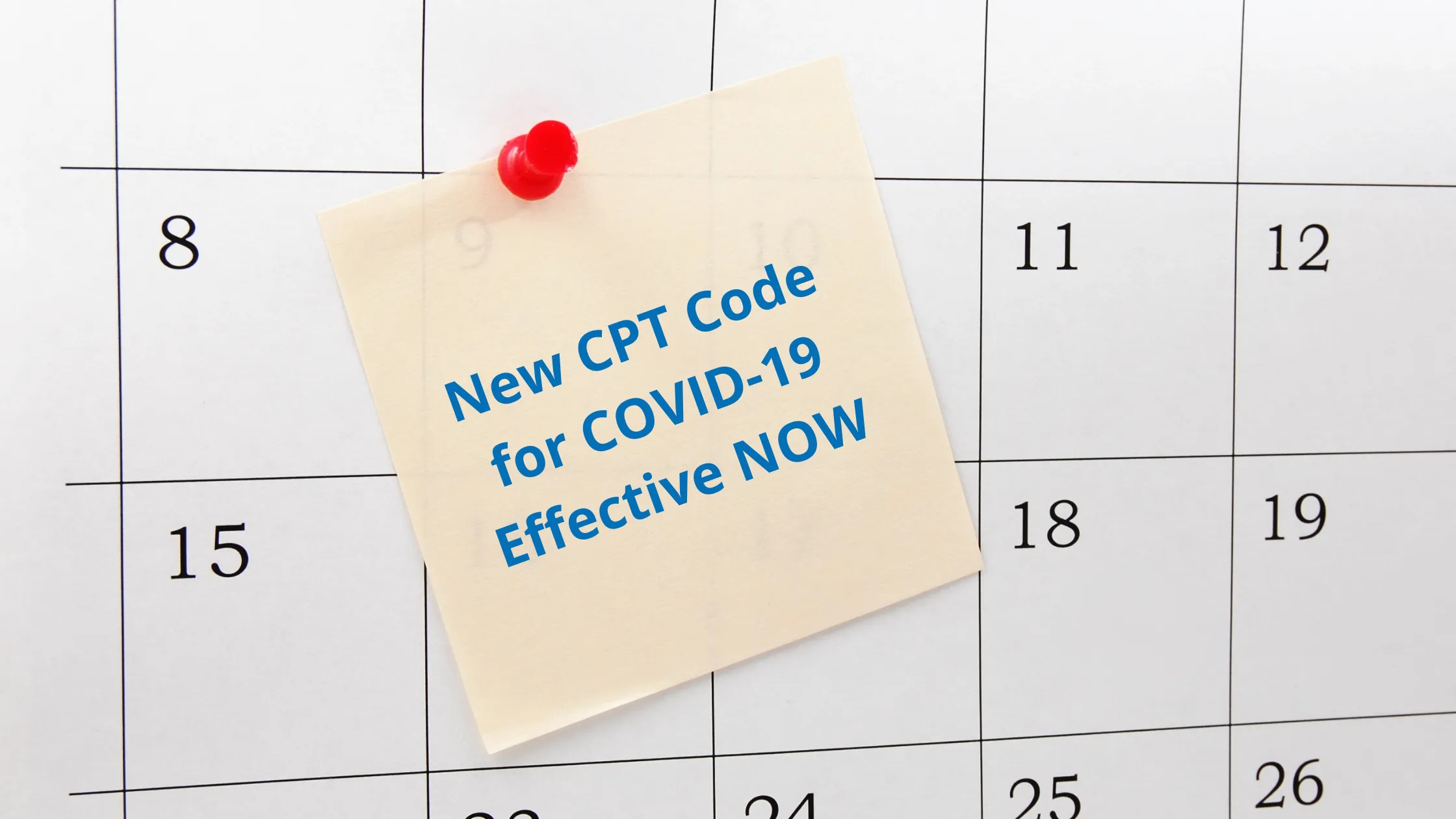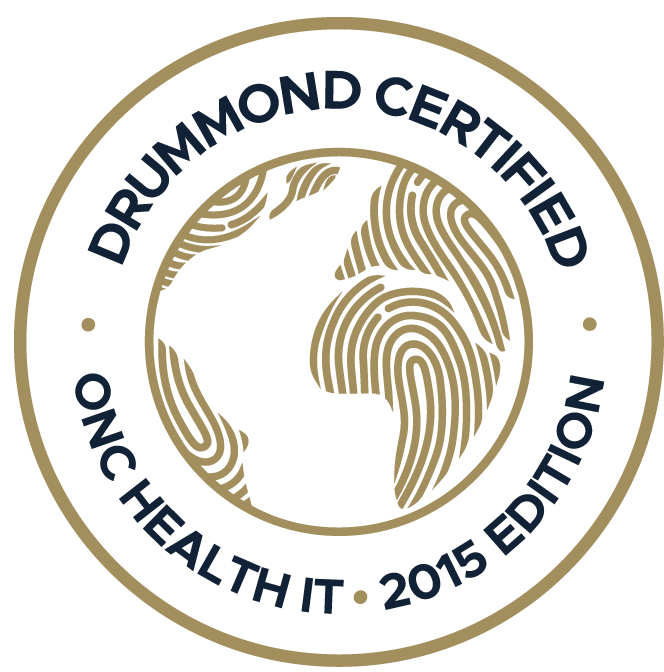Urgent care doesn’t have to mean long waits or crowded clinics. Telemedicine makes care faster, safer, and more accessible, helping providers and patients manage common concerns efficiently.

The American Medical Association (AMA) has recently announced two new codes for COVID-19 with an unexpected twist. The September 8 release stated the new codes were effective “immediately.” While they are approved to be part of the 2021 CPT code set, providers are able to submit the code 99072 when the practice feels that the patient encounter required:
“additional supplies and clinical staff time to perform safety protocols for the provision of evaluation, treatment or procedural services during a public health emergency in a setting where extra precautions are taken to ensure the safety of patients as well as health care professionals.”
This code can be reported in addition to the primary services rendered to the patient. The second code (86413) is specific to the laboratory tests that will measure antibodies and evaluate the effectiveness of treatments used against the infection.
It is important to remember the relationship between the AMA and the payors. While the AMA may provide a code and a way to report the extent of services provided, the payors are not obligated to provide reimbursement for the code. An addition to the procedure code set, outside of the normal update cycle may also catch some payors unprepared to recognize the code “now.” It is recommended that a test claim is submitted to the larger payor groups before the entire weeks’ worth are sent producing only a large number of denials for an “invalid code.” Before placing the code into your workflow, it is also recommended that the practice discuss the process for managing any subsequent impact to the patient’s out-of-pocket. What will the process be when a payor denies the code? What will the process be for the self-pay patients? Are both answers consistent with the process/policy for any other service billed in the practice?
Coming Soon: New Codes, New Guidelines and New Documentation Opportunities
The long-awaited changes to the Evaluation and Management (E/M) codes will be a reality on January 1, 2021. New documentation requirements for each level of service within the office and/or out-patient setting limit the history and physical exam to what is considered “medically appropriate” for the presenting problem. The changes eliminate the need for use of the 1995 and 1997 guidelines for these two specific service locations.
Moving forward time will play a more direct role in determining the specific level of service reported. Time no longer needs to be anchored with “over 50 percent spent counseling and coordinating care.” Time can be reported for both face/face and non-face/face work specific to an individual patient’s care on “the date of the encounter.”
This is a significant change for many practices using Practice EHR. Documenting the time spent charting, ordering medications, test/procedures, or communicating with other healthcare professionals will “count” towards the billable service(s). Counseling and educating the patient’s family or caregivers – outside of the face/face time with the patient on the same date of services will now “count” towards the billable service(s). Practice EHR has developed an enhanced workflow that can be added to the provider’s current chart and encounter workflow upon request to accommodate these changes.
The alternative method to support the level of service reported lies in documenting the medical decision making – the severity of the patient’s condition, the number of records, the risk of complications, etc. While the intent of this established key component has not changed dramatically, the need to more clearly document these decision points is the key change. The assessment may need to include more than just the covered diagnosis or the primary reason the patient is being seen when defending the higher level of visits. Practice EHR has developed an enhanced assessment section that can be added to the provider’s current templates upon request.
To ensure that these changes are available within your system and there is time to road test the new workflow, please request the changes from your sales representative and/or implementation specialist before October 15, 2020. Requests after that time will be completed as time permits and may not be available for documenting patient care the first week of January.
Topics: Industry Update
RECENT POSTS



TOPICS
- EHR Solution (193)
- EHR (127)
- digital age (120)
- Patient Care (117)
- Medical Billing (112)
- Specialty-Specific EHR (112)
- Industry Update (98)
- Technology in Healthcare (84)
- EHR Features (79)
- Small Practice (78)
- Medical billing services (74)
- Integrated EHR (64)
- RCM (64)
- HIPAA Security (62)
- Cloud-based EHR (44)
- New Technology (44)
- Telemedicine (44)
- Healthcare Office Management (40)
- Practice EHR News (38)
- Kiosk (31)
- Revenue Cycle Management (28)
- AI Solutions (25)
- ePrescribing (21)
- AI Scribing (17)
- Best EHR Software (17)
- Practice Management Software (13)
- AI-powered Medical Billing (12)
- EMR (12)
- TeleVisit (12)
- AI EHR (11)
- Practice Automation (11)
- AI Scribe (10)
- Client Favorites (10)
- The ONE (10)
- Switching to New EHR (9)
- Urgent Care (9)
- AI scanning (8)
- Best EHR Practice (8)
- EHR Integration (8)
- MACRA/MIPS (8)
- Patient Portal (8)
- Psychiatry EHR (8)
- Automated Health Tools (6)
- E-Prescribing (6)
- Medical Practice Management Software (6)
- Product Updates (6)
- events (6)
- MIPS (5)
- Mobile EHR (5)
- Telehealth Platforms (5)
- Family Medicine EHR (4)
- HIPAA (4)
- Insider (4)
- Integrated Practice Management (4)
- Internal Medicine EHR (4)
- MIPS Reporting (4)
- Multilingual AI Scribe (4)
- Orthopedics EHR (4)
- Podiatry (4)
- Podiatry EHR (4)
- Regulatory Updates (4)
- Telehealth Platform (4)
- Automated EHR (3)
- Chiropractic EHR (3)
- Digital Experiences (3)
- EHR Flaws (3)
- EHR Implementation (3)
- EHR for Chiropractors (3)
- EHR for Small Practices (3)
- Eligibility Verification in Medical Billing (3)
- Medical Coding Services (3)
- Patient Check-in Kiosk (3)
- PracticeEHR GO App (3)
- Cash Flow (2)
- Cashless Payments (2)
- Clearinghouse (2)
- Dermatology EHR (2)
- EHR Scheduling (2)
- Family Medicine (2)
- Foot and Ankle Care (2)
- Foot and Ankle EHR (2)
- Health records 101 (2)
- Healthcare Compliance Certification (2)
- Medical Billing Partner (2)
- Medical Credentialing (2)
- Pediatrics EHR (2)
- Quality of Patient Care (2)
- Reporting Under MIPS (2)
- Risk and Liability in Medical Settings (2)
- Voice-Activated AI Scribe (2)
- What Works Clearinghouse (2)
- ACA Subsidy (1)
- AI Scan (1)
- AI Scribe for Pediatric Care (1)
- Bariatric EHR (1)
- Behavioral Health Practices (1)
- Billing Communication (1)
- Billing for Private Practices (1)
- Cardiology EHR (1)
- Charting (1)
- Data Security (1)
- Dos and Don'ts (1)
- EHR Dashboard (1)
- EHR Guides (1)
- EHR KPIs (1)
- EHR Questions to Ask (1)
- EHR Transition (1)
- EHR for Chronic Illness (1)
- EMR vs EHR Difference (1)
- ENT EHR (1)
- Endocrinology EHR (1)
- Gastroenterology (1)
- Gastroenterology EHR (1)
- General Surgery EHR (1)
- Geriatric AI scribe (1)
- Geriatrics EHR (1)
- Guides (1)
- Healthcare Practice Office Management (1)
- Help Center Videos (1)
- Insurance Reimbursement (1)
- KPI (1)
- Key Performance Indicators (1)
- Lab Processing (1)
- MACRA (1)
- Nephrology EHR (1)
- Neurology EHR (1)
- Pain Management EHR (1)
- Patient Behavior (1)
- Pediatric Care (1)
- Physical Therapy EHR (1)
- Practice Cash Flow (1)
- Practice Efficiency (1)
- Pulmonology EHR (1)
- Reconsider Your EHR (1)
- Simplify Practice Management (1)
- Staffing in Healthcare (1)
- Switch Medical Billing Providers (1)
- Urgent Care Medical Billing (1)
- Urology EHR (1)
- insurance claim denials (1)








